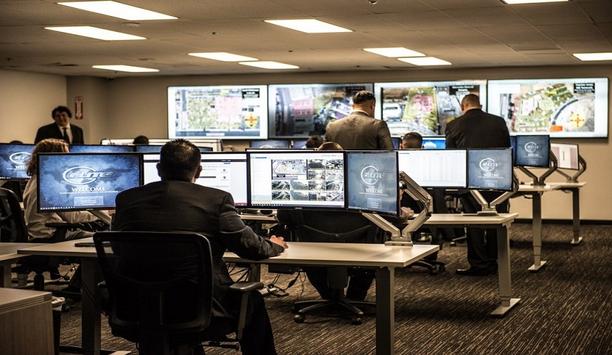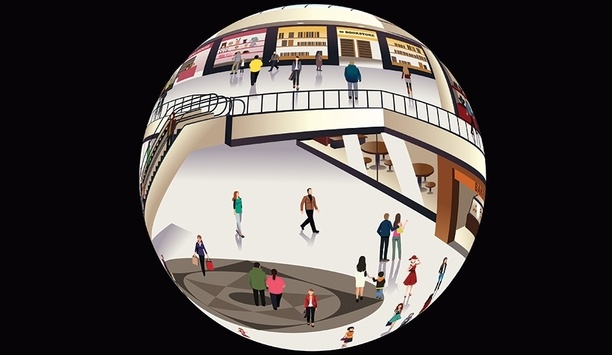Museum security - Expert commentary
The average business owner or investor has some kind of security precaution in place, especially in the after-hours when there are fewer deterrents to inhibit criminal activity. Security guards, video surveillance systems, motion sensor lights, or even just fake cameras placed around the property are some of the common options people choose. Future of overnight security Smart business owners are starting to realise, however, that some of these traditional security measures are becoming...
It’s no secret that the data security sector is constantly changing. It has an annual CGR of about 12.3%. Future trends in data security Much of this has to do with the rise of cybercrime in recent years, with reports showing that cyberattacks happen as often as every 39 seconds. To combat the growing rate of cybercrime, data security has been on the rise. As we journey further into this era, it becomes evident that a spectrum of significant trends is molding the future of data se...
We work with and buy from “middlemen” all the time, yet the term remains loaded with negative connotations. It’s telling that the term remains gendered, no one has tried very hard to normalise the term “middleperson” in the same way as “chairperson” or “police officer.” Why? It’s easy to see a middleman as an inconvenience, someone who skims profit off the top while offering no real value to the end customer. Think of the second-hand c...
Intrusion alarm systems are currently facing a growing number of potential error sources in the environment. At the same time, alarm systems must comply with increasingly demanding legal requirements for sensors and motion detectors. As a future-proof solution, detectors equipped with Sensor Data Fusion technology raise the level of security while reducing the risk of cost- and time-intensive false alarms. This article provides a comprehensive overview of Sensor Data Fusion technology. Anti-mas...
You are not alone: operators everywhere are asking themselves what are they going to do? How are they going to get back to business, and fast? How are they going to cost-effectively operate with all the new safety requirements that have arisen as a result of COVID? How are they going to ensure it all gets done for the safety of customers and staff? How are they going to protect their brand from the negative exposure of being identified as a property with a reputation for COVID? The economic imp...
Today’s security professionals are tasked with protecting the entirety of a facility or campus from every possible threat. It’s a big task, given the range of solutions available; from cybersecurity to prevent hacking, to video surveillance to monitor the goings-on within the facility, to the physical security of the building itself. For most businesses and schools, keeping the entrances and exits to a building secure is an extremely high priority—when an individual cannot ge...
The physical security market continues to experience growth as users look to capitalise on the promises of emerging technologies and because of this, 2017 proved to be a great year for Oncam. In fact, this year was the best year in Oncam's history in terms of sales, as 360-degree fisheye cameras have gone from being a “specialty” camera used only in certain applications to a primary device for enabling total situational awareness. Today, many of our customers leverage 360-degree ca...
Biometric identification technologies today are becoming pervasive. Many smartphones offer fingerprint unlock options, and most organisations have at least considered the technology as a solution for their identification and access needs. While biometrics have dramatically improved in the past several years to deliver faster, more efficient and more secure solutions, not everyone is ready for the change. New York MTA case study But does that mean that organisations need to hold off on implemen...
With every technological advance that canbenefit museum management comes anotherthat may assist thieves When protecting art treasures, the first instinct for many security professionals may well be to look at recent advances in technology. Hasn’t the advent of IP-addressable devices provided sufficient tools to protect art exhibits from theft in a discreet manner? Apparently not, and entrenched attitudes abound among curators. Consultants who so much as m...
Major art heists often feature audacity that defeats even the most thorough security protocols Museum security, like art, is ever-changing. Traditional security practices like manned guarding alone are not sufficient to keep thieves at bay. Modern security technologies such as video surveillance, motions detectors, intruder alarms and other physical security devices also play an equally important role in securing museums and its art work. Regrettably, having all the...
To succeed at outsourcing, the relationship between the organisation and the outsourcing company has to be an equal partnership Can you save money on security by outsourcing? Maybe, maybe not, according to William J. Powers III, CIPM II, CIPI. “Considering the way I approach outsourcing, I’m not sure if it saves money,” says Powers. As director of facilities at the Sterling and Francine Clark Art Institute in Williamstown, Mass., Powers oversees facilities,...
Museums facing growing security challenge with rise of armed robbery It only takes a shocking 58 seconds to steal a painting. Jonas Rehnberg, writer at Assa Abloy Future labs, speaks to former museum security chief Ton Cremers about the safe-keeping of precious artefacts in museums and art galleries. In 2004, armed, masked robbers stormed into the Munch Museum in Oslo and stole two masterpieces - "The Scream" and "Madonna" - before the eyes of shocked spectators....
The key to unlocking K12 school safety grants
DownloadHoneywell GARD USB threat report 2024
Download5 surprising findings from OT vulnerability assessments
DownloadPalm vein recognition
DownloadPhysical access control
Download
















